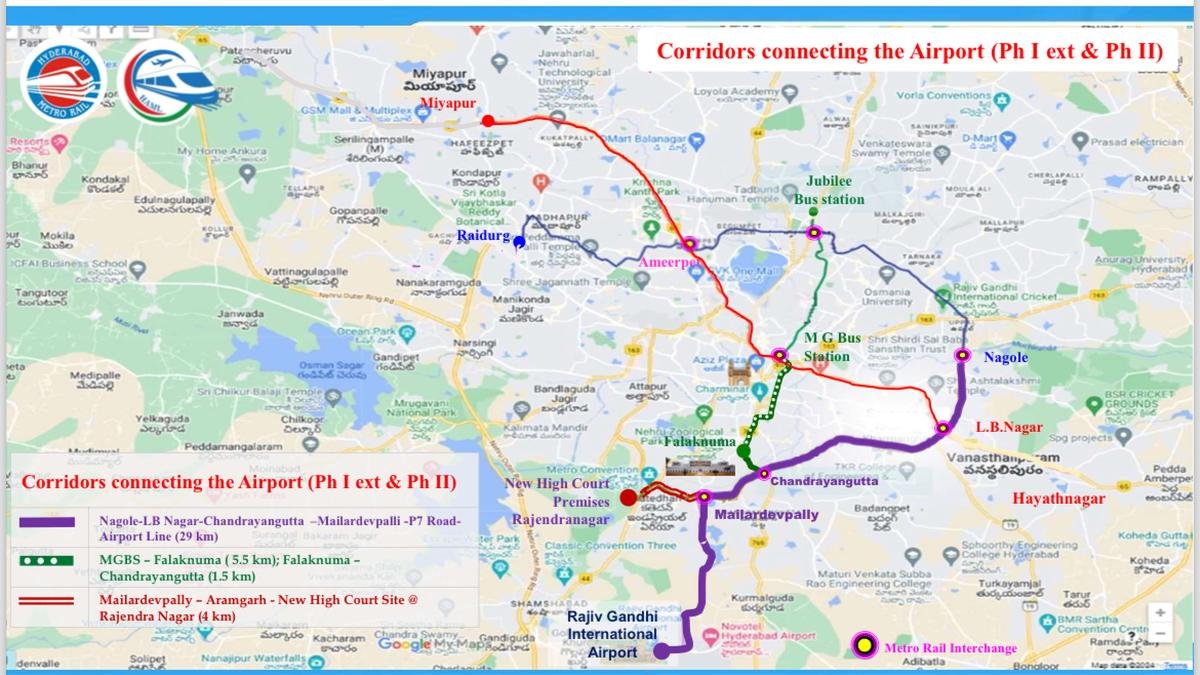Synopsis
Hyderabad Metro Rail (HMR) is expanding its network to include a new metro station in Nagole, connecting to the international airport at Shamshabad. The decision involves strategic shifts in alignment along the Musi River to avoid infrastructure obstacles and facilitate river rejuvenation efforts. Additional stations are planned to enhance connectivity, with a focus on minimizing disruptions and collaborating with local communities for land acquisition. The construction of interchange stations, such as Chandrayangutta, presents engineering challenges that require careful integration with existing infrastructure. Overall, HMR’s expansion efforts prioritize sustainability, efficiency, and community engagement, promising to improve urban mobility in Hyderabad.
Hyderabad Metro Expands: New Stations and Infrastructure Development
Connecting Communities and Improving Connectivity
Hyderabad Metro Rail (HMR) has announced ambitious plans for expanding its network, enhancing connectivity, and easing commuting woes for residents. Led by MD N.V.S. Reddy, a recent inspection of the Nagole-Chandrayangutta leg of the Airport Metro revealed strategic decisions aimed at optimizing infrastructure development while minimizing disruptions.
Navigating Obstacles: Engineering Marvels Along Musi River
One of the key challenges faced by the metro officials was navigating around existing infrastructure, including water main pipelines and high-tension power lines along the Musi River. To address this, HMR has opted to shift the alignment of the proposed metro station, showcasing a commitment to both efficiency and environmental consciousness. The decision to employ longer spans for crossing the Musi not only facilitates the metro project but also dovetails with plans for river rejuvenation.
Enhancing Accessibility: Stations Galore
The proposed Nagole RTO station, strategically located near Alkapuri Junction, promises seamless connectivity to the Outer Ring Road (ORR), a lifeline for commuters. Moreover, additional metro stations along the route, such as those near Kamineni Hospital and Mythri Nagar, aim to serve as vital arteries connecting residential hubs to the larger metro network. By situating stations close to junction points, HMR ensures convenience for nearby residents while fostering greater integration within the transportation ecosystem.
Overcoming Challenges: Flyovers and Interchange Stations
The presence of towering flyovers at Bairamalguda posed a unique challenge for the Airport Metro line’s alignment. In response, HMR has opted for a strategic shift in alignment and station location, demonstrating adaptability in the face of infrastructure constraints. Meanwhile, the construction of the Chandrayangutta interchange station presents another engineering feat, requiring meticulous planning to seamlessly integrate with the existing metro network.
Collaborative Approach: Minimal Land Acquisition, Maximum Impact
Recognizing the importance of community engagement, HMR emphasizes a collaborative approach to land acquisition, preferring dialogue with both law enforcement and residents. This commitment to minimal land acquisition underscores HMR’s dedication to fostering community-centric development while minimizing disruption to local ecosystems.
A Vision for Inclusive and Sustainable Urban Mobility
As Hyderabad Metro Rail embarks on this transformative journey, it not only aims to expand its physical footprint but also strives to redefine urban mobility paradigms. By prioritizing sustainability, efficiency, and community integration, HMR sets a commendable example for urban development initiatives nationwide. As these plans unfold, they promise to enhance the quality of life for Hyderabad’s residents while laying the groundwork for a more connected and prosperous future.
(Source: HMR Official Release)
Last Updated on April 29, 2024 11:04 am by Admin




